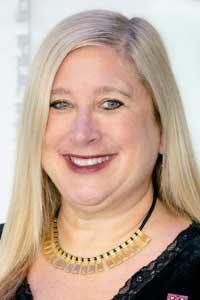At a Glance:
- An ally is a person who actively and intentionally seeks to bring about change by fostering inclusion, social justice and human rights.
- Panelists, Chandra Brown, CEO, MxD, and Jackie Mattox, president & CEO, Women in Electronics, shared perspectives gleaned from the collective knowledge they harness in leading their respective organizations.
- True allyship works to uplift others to combat systemic issues. This requires follow-through. Words without action can be perceived as disingenuous and performative.
Machine Design and Electronic Design hosted a WISE (Women in Science and Engineering) virtual panel to round out a year-long series of video chats on women’s participation across STEM fields. This session centered on the subject of allyship and the role of women-led organizations in elevating diversity across STEM disciplines.
Panelists Chandra Brown, CEO, MxD, and Jackie Mattox, president & CEO, Women in Electronics, each shared perspectives gleaned from the collective knowledge they harness in leading their respective organizations.
In this three-part Q&A that has been edited for length and clarity, Brown and Mattox agree that allyship can be an important tool in promoting equity and in supporting underrepresented groups. But to do so effectively, they argued, organizations, institutions and their senior members need to look inward to figure out the work that needs to be done.
Part 1: Defining the Term “Allyship”
Rehana Begg: I want to frame for our audience exactly what we mean by allyship. One definition is, an ally is a person who actively and intentionally seeks to bring about change by fostering inclusion, social justice and human rights. Allies constantly learn, question and re-evaluate the space they occupy. From your perspective, what does allyship mean to you, and why is it important today?
Chandra Brown: I loved your definition. To me, it really involves listening—the actions of active listening, learning. Obviously, we want to advocate. That’s probably one of the key words that I think of when I think of allyship. How are we lifting up others to work against systemic [issues]? And it doesn’t matter what they are—racism, sexism ageism—any underprivileged communities. And, it’s a combination; it can’t just be words. It’s words and actions. It’s inward-facing and outward-facing.
In terms of the second part of your question (“Why is this important?”), the reality is, we talk about this all the time as a digital manufacturing institute. The speed of change, right? We are in an industrial revolution (Industry 4.0). What’s happening is happening so fast. You must be bringing everyone along with you. There’s going to be 2 million plus jobs unfulfilled in U.S. manufacturing alone. If we are not helping and we are not becoming a true ally, literally the work is not going to get done. We’re going to be completely under-represented in areas that we must have the best and the brightest moving us forward.
That’s where I think it’s just with the speed of change and the importance of different perspectives. When you look at data and the digital divide, the reality is we must have all these under-represented groups at the table. To me it’s absolutely critical. It’s the future of this country, and the global marketplace as well.
Jackie Mattox: We try to educate a lot based on the data within women in electronics. We just had the Women in the Workplace 2021 report come out by Lean In. A really good example of allyship, if you look at Sheryl Sandberg and the work she’s doing, is that she’s taking her influence and she’s actually doing something with that so that a lot of people can be getting really good data and information on this. So, a lot of this allyship.
In the electronic component industry, to give you some perspective, we have about a 70% leadership turnover in the next five to eight years. Who is filling that funnel? If we don’t start opening the doors for more equitable situations, we are going to be in a leadership crisis. We’re already starting to feel that.
A lot of this discussion with allyship does come down to leadership, and how our leaders are leading their organizations and the policies they’re implementing. Do we have policies that promote equitable situations, allyship, mentorship and sponsorship?
Click here to register for the Engineering Change Through Allyship webinar with Chandra Brown and Jackie Mattox, to be held Nov. 30th.
Editor’s Note: Machine Design's Women in Science and Engineering (WISE) hub compiles our coverage of gender representation issues affecting the engineering field, in addition to contributions from equity seeking groups and subject matter experts within various subdisciplines. Click here for more.
About the Author

Rehana Begg
Editor-in-Chief, Machine Design
As Machine Design’s content lead, Rehana Begg is tasked with elevating the voice of the design and multi-disciplinary engineer in the face of digital transformation and engineering innovation. Begg has more than 24 years of editorial experience and has spent the past decade in the trenches of industrial manufacturing, focusing on new technologies, manufacturing innovation and business. Her B2B career has taken her from corporate boardrooms to plant floors and underground mining stopes, covering everything from automation & IIoT, robotics, mechanical design and additive manufacturing to plant operations, maintenance, reliability and continuous improvement. Begg holds an MBA, a Master of Journalism degree, and a BA (Hons.) in Political Science. She is committed to lifelong learning and feeds her passion for innovation in publishing, transparent science and clear communication by attending relevant conferences and seminars/workshops.
Follow Rehana Begg via the following social media handles:
X: @rehanabegg
LinkedIn: @rehanabegg and @MachineDesign



